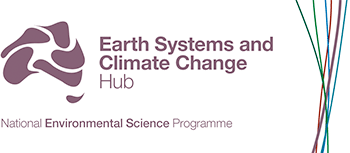The National Centre for Coasts and Climate, through the Earth Systems and Climate Change Hub, has undertaken research to improve knowledge and resources on blue carbon ecosystems, coastal erosion and …
Sonia Bluhm
-
-
Co-designed activities
Designing climate change risk information standards for the financial services sector
by Sonia Bluhm -
NewsUncategorized
Government review of the Intergovernmental Panel on Climate Change Sixth Assessment Report, Working Group I: The Physical Science Basis
by Sonia BluhmThe Intergovernmental Panel on Climate Change is currently undergoing the government review process for Working Group I (the Physical Science Basis) of its Sixth Assessment Report. Three science presentations are …
-
In this webinar, ESCC Hub researchers Eng. Joao Morim and Dr Andrew Marshall discuss the impacts of climate change and variability on wind-forced waves, to inform the next generation of …
-
Webinars
Science webinar: Disentangling environmental and human drivers of carbon dioxide uptake and release on land
by Sonia BluhmIn this webinar, Dr Vanessa Haverd (CSIRO) provides an overview of the land carbon cycle, including the natural and human-induced sources and sinks. She also describes the role and performance …
-
Firestorms are (pyrocumulonimbus bushfires) are fires so intense they create their own thunderstorms, extreme winds, black hail, and lightning. Human-caused climate change has already resulted in more dangerous weather conditions …
-
News
Nitrogen fertilisers are incredibly efficient, but they make climate change a lot worse
by Sonia BluhmNitrous oxide (N₂O) is the third-most-important greenhouse gas after carbon dioxide and methane. Human-driven N₂O emissions have been growing unabated for many decades, but we may have been seriously underestimating …
-
Webinars
Science webinar: Ensuring Australian climate model simulations inform global climate assessments
by Sonia BluhmIn this webinar, Dr Simon Marsland from CSIRO will introduce the Coupled Model Intercomparison Project (CMIP6) design and experimental protocols, and present results from the ACCESS simulations of past, present …
-
News
New information on extreme weather and natural hazards in our changing climate – synthesis brochures of the latest knowledge and ESCC Hub research
by Sonia BluhmThe Earth Systems and Climate Change Hub has produced four synthesis brochures outlining the latest knowledge and Hub research on extreme weather events, including tropical cyclones, east coast lows, bushfires …
-
In this webinar, Dr Helen Phillips (University of Tasmania) introduces the ocean’s role in the climate system, and how it draws down heat from the atmosphere. She also discusses new …
-
News
Science update: Increasing our understanding of global-scale climate through climate models
by Sonia BluhmESCC Hub research over the past three years under Project 2.2 used Australian-developed climate models, such as the Australian Community Climate and Earth-System Simulator (ACCESS) to investigate the role of …
-
News
Science update: What does the future hold for El Niño-Southern Oscillation and the Indian Ocean Dipole?
by Sonia BluhmESCC Hub research over the past three years under Project 2.2 has investigated how important Australian climate drivers such as ENSO and the IOD will respond to climate change in …
-
ESCC Hub research over the past three years under Project 2.2 has investigated the causes behind recent extreme climate events, including the contribution of human-caused climate change. The project team …
-
Webinars
Science webinar: Assessing future climate risks and adaptation options for Australian water systems
by Sonia BluhmIn this webinar, Michelle Ho from the CSIRO discusses how a robust (bottom-up) assessment approach known as ‘decision scaling’ can be used to assess future climate risks and adaptation options …
-
Webinars
Science webinar: Tropical cyclones in the Australian region – past, present and future
by Sonia BluhmIn this webinar, Tony Rafter (CSIRO) outlines current understanding of historical tropical cyclone behaviour, recent trends in the Australian region and future trends. He demonstrates how a new interactive web …
